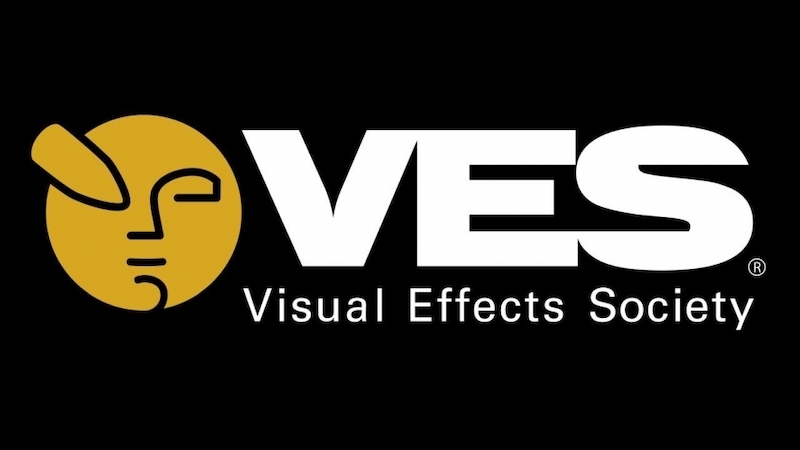The visual effects industry’s professional global honourary society Visual Effects Society (VES) announced their newest inductees into the VES Hall of Fame.
The Hall of Fame inductees and other special honourees will be celebrated at a special event in October. The 2023 class of VES Hall of Fame honourees includes Samuel Z. Arkoff; Lawrence W. Butler; Wah Chang; Norman Dawn, ASC; W. Percy Day OBE; Marcel Delgado; Farciot Edouart, ASC; and Edward D. Wood, Jr.
“Our VES Hall of Fame honourees represent a group of exemplary and pioneering artists and innovators who have had a profound impact on the field of visual effects,” said VES board chair Lisa Cooke. “We are proud to recognise those who helped shape our shared legacy and continue to inspire future generations of VFX practitioners.”
VES 2023 Hall of Fame inductees:
Samuel Z. Arkoff (1918-2001): Arkoff was an American producer of more than 200 low-budget exploitation films. He was the co-founder of American Releasing Corporation, which later became known as American International Pictures (AIP). He is credited with starting several genres including beach party and outlaw biker movies, and his company played a substantial part in bringing the horror film genre to a novel level with successes such as Blacula, I Was a Teenage Werewolf and The Thing with Two Heads. AIP films starred many established actors in principal or cameo roles, including Boris Karloff and Vincent Price, as well as others who became household names, most notably Dennis Hopper and Jack Nicholson.
Arkoff also gave fresh talent including Francis Ford Coppola, Martin Scorsese and Woody Allen the opportunity to direct some of their early feature films. He was featured alongside former collaborators including Roger Corman, Dick Miller and Peter Bogdanovich in the documentary Schlock! The Secret History of American Movies, about the rise and fall of American exploitation cinema.
Lawrence W. Butler (1908-1988): He was an American special effects artist, best known as the inventor of the bluescreening process. He won an Academy Award for Best Special Effects for his work on The Thief of Baghdad. Butler invented the blue screen and travelling matte technique in order to achieve the visual effects which were unprecedented in 1940. He was also the first special effects innovator to have created these effects in Technicolor, which was in its infancy at the time.
His filmography includes special effects for The Caine Mutiny, Casablanca, 20 Million Miles to Earth and Oscar-nominated work on That Hamilton Woman, Jungle Book and A Thousand and One Nights. Butler also received a “Scientific and Technical Award” from the Academy for the concept of applying low inertia and stepping electric motors to film transport systems and optical printers for motion picture production.
Wah Chang (1917-2003) was an American designer, sculptor, animator and artist. In 1939, Chang became the youngest member of Disney’s effects and model department, where he sculpted the maquette of Pinocchio and articulated deer models for Bambi that animators used as references.
He is lauded for the props he designed for Star Trek: The Original Series, including tribbles, the tricorder and communicator, and for his spectacular creations including the headdress for Cleopatra, masks for the original Planet of the Apes, the dinosaurs in Land of the Lost and the time machine in the 1960 adaptation of H.G. Wells’ sci-fi favourite The Time Machine, for which he won an Academy Award for his visual effects work, but is not formally listed among the recipients of that award due to the way in which the credits were submitted to the Academy. Chang’s work as a stop-motion animator has been enjoyed for years in the cartoons Hardrock, Coco and Joe and Suzy Snowflake.
Norman Dawn, ASC (1884-1975) was an early American film director and artist. Although cinematography was his chosen profession, he also functioned as producer, director, writer, designer, visual effects cameraman, matte painter, production illustrator and film editor. He was the first person to use the glass shot in a motion picture, now known as matte painting, and was the first director to use rear projection in film production.
Dawn’s first film Missions of California made extensive use of the glass shot, in which certain parts of the intended image are painted on a piece of glass and placed in between the camera and the live action. Dawn combined his experience with the glass shot with the techniques of the matte shot. The low cost and high quality of Dawn’s matte shot made it the mainstay in special effects cinema throughout the century. His filmography includes A Tokyo Siren, Lure of the Yukon, and Orphans of the North.
(Walter) Percy Day O.B.E. (1878-1965) was a British painter best remembered for his work as a matte artist and special effects technician in the film industry. Day mastered the art of illusionist techniques, which enabled directors to enlarge their repertoire and tackle subjects which might otherwise have been too costly to produce. In 1922, he introduced the use of the glass shot into French cinema, which was used for the first time in Henry Roussel’s Les Opprimés, released in 1923, and hailed by critics as a revolution in cinematography.
In addition to designing special effects, Day created trick photography for many British classics released during the forties, including The Life and Death of Colonel Blimp, A Matter of Life and Death, Black Narcissus, The Third Man and Laurence Olivier’s production of Henry V. He painted mattes and created trick shots for numerous films by Alexander Korda and later joined the Korda group as director of special effects at Shepperton Studios where he remained until his retirement. In 1948, Day was awarded the Order of the British Empire for his services to British cinema.
Marcel Delgado (1901-1976) was a Mexican-American sculptor and model-maker, whose technique revolutionised stop-motion animation. Prior to Delgado, stop motion models were typically made from clay, which was difficult to adjust between shots. He built a skeleton for his models, made from Dural and then filled in with foam rubber or cotton cloth and covered with latex to serve as skin, giving his models a more natural and realistic look, while simultaneously making it easier to handle them.
Delgado and Willis O’Brien worked together for many years and became one of the most respected special effects teams in Hollywood, inspiring great technicians and producers such as Ray Harryhausen. Their most famous and groundbreaking collaboration was the original King Kong, who Delgado brought to life by sculpting one of the most iconic characters in cinematic history. After King Kong, Delgado continued to break new ground as a special effects master working on films like The Wizard of Oz, Mighty Joe Young, The War of the Worlds, 20,000 Leagues Under the Sea and Mary Poppins.
Farciot Edouart, ASC (1894-1980) was an American motion picture special effects artist and innovator of French descent, a recognised specialist and innovator in process photography, also known as rear projection. At the onset of World War I, Edouart enlisted in the Camouflage Division of the Corps of Engineers, and patented a technique for detecting camouflage through photographic means, and then worked as a war photographer for the American Red Cross in Europe.
In addition to being adept at making back-projection look realistic and exotic locales appear authentic, Edouart also perfected the glass shot, which cleverly melded small models with full-sized sets. In a career that began in 1915 and spanned work on approximately 350 films, Edouart won a total of 10 Academy Awards: two competitive for I Wanted Wings and Reap the Wild Wind; seven technical and scientific awards; and an honourary award for Best Visual Effects for outstanding achievement in creating special photographic and sound effects for Spawn of the North.
Edward D. Wood Jr. (1924-1978) was an American filmmaker, actor and pulp novel author. In the 1950s, Wood directed several low-budget science fiction, crime and horror films that later became cult classics, notably Glen or Glenda, Jail Bait, Bride of the Monster and Night of the Ghouls, several of which were collaborations with his personal movie idol, Bela Lugosi. Notable for their campy and low-brow aesthetics, unmatched stock footage, eccentric casts and idiosyncratic stories, Wood’s films remained largely obscure until he gained posthumous notoriety as the creator of “the worst film ever made” Z-movie classic Plan 9 from Outer Space, renewing public interest in his life and work.
Following the publication of Rudolph Grey’s 1992 oral biography Nightmare of Ecstasy: The Life and Art of Edward D. Wood Jr., the biopic Ed Wood was directed by Tim Burton. The cinematic homage, starring Johnny Depp as Wood, received critical acclaim and two Academy Awards, and cemented Wood’s unique legacy as a cult-icon.
As previously announced, Oscar-winning VFX supervisor and founding VES member Tim McGovern was named recipient of the 2023 VES Founders Award. The Society designated archivist and curator Sandra Joy Aguilar; producer and AMPAS governor Brooke Breton, VES; VFX artist agent and executive Bob Coleman; and Tim McGovern with Lifetime VES memberships. VES will announce the additional honourees soon.


